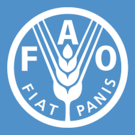
FAO Published Global Aquaculture Statistics
Editor/Mohamed Shihab
With Botswana included as the newest aquaculture producer country, the FAO Global Aquaculture Production Statistics Dataset for 1950-2015 released in March 2017 has registered a total of 201 currently existing countries and territories with aquaculture production statistical data. The
new dataset now contains records of 591 aquatic species and species
groups ever farmed in inland freshwater, inland saline water, coastal brackish water and marine water.
Not unexpectedly, world aquaculture production continued its growth in 2015. The newly released FAO aquaculture statistics has recorded another all-time high world aquaculture production of 106 million tonnes in live weight in the year 2015, with atotal estimated first-sale value of US$163 billion. This total production comprised farmed aquatic animals, aquatic plants and non-food products (pearls and shells).
The growth of world aquaculture production of aquatic animals in the first 15 years in the new millennium has gradually slowed down and the 2001-2015 average annual growth rate was 5.9%, which is significantly lower than the double digit growth percentage rate seen in the 1980s and the 1990s. At continent level, African aquaculture growth during 2001-2015 averaged at 10.4%, followed by Asia (6%) and Americas (5.7%). In Oceania and Europe aquaculture growth were
only 2.9% and 2.5%, respectively, in the last 15years.
In 2015 world food fish aquaculture increased by 4%, the lowest annual growth rate in the past few decades. Americas and Oceania experienced negative growth in 2015 (Table 2).
By production volume, the sub-sector of aquaculture of aquatic animals has been dominated by finfish farming, which represents the major aquaculture product in many countries (Figure 1). The contribution of finfish has been maintained between 63-68% in the last two decades. Molluscs farming, which used to count for about 30% of the total food fish
farming production around the year 2000, has gradually declined to 21% in 2015. In contrast, crustacean farming improved its share from less than 5% before 2000 to close to 10% in the past decade. Aquatic plants farming
counted for 27.7% in 2015 in the total production volume when aquatic plants and animals are combined.
The composition of major groups of species of farmed aquatic animals vary greatly across the world. Finfish farming is the most important type of aquaculture operation in volume terms on all continents. In 2015 finfish farming counted for 67.8% of total aquaculture output of aquatic animals.
Aquaculture has made steadily increasing contribution to the world fish supply. Within 15 years in the new millennium, the aquaculture contribution to the world production of aquatic animals (captured and farmed ombined) has increased from 25.7% in 2000 to 45.3% in 2015.
To the production of aquatic animals from marine and brackish water, aquaculture (including mariculture and coastal aquaculture) contributed 25.5% to the total production, up from 13.8% in 2000 (Figure 3). Within
inland water total production of captured and farmed aquatic animals, aquaculture consolidated its dominating share from 68.6% in 2000 to 81% in 2015.
With almost all farmed aquatic animals destined for human consumption, aquaculture supplied 10.42 kg of food fish for human consumption on world average in 2015, a level further up by 0.28 kg from 10.14 kg in 2014.


ساحة النقاش